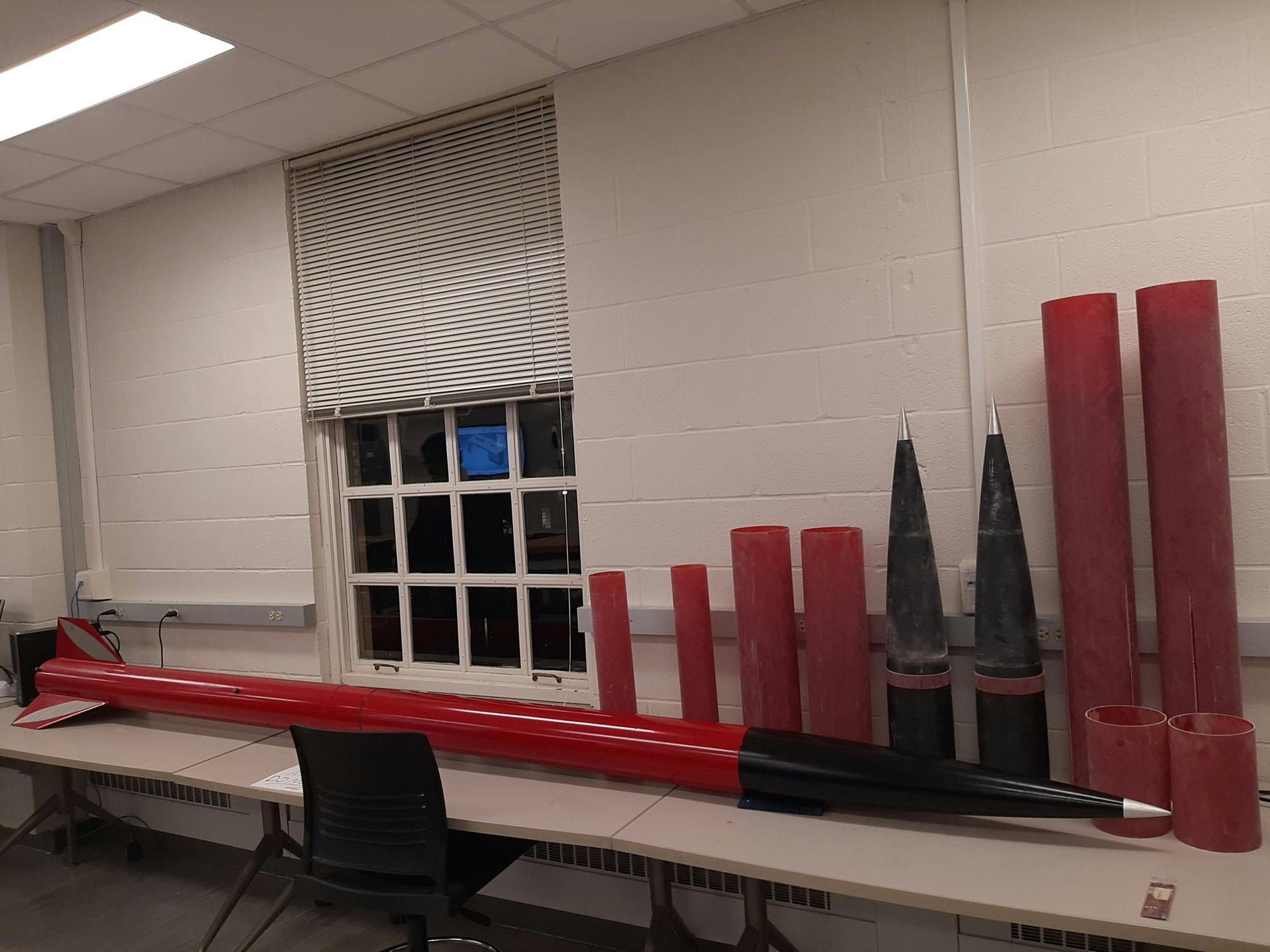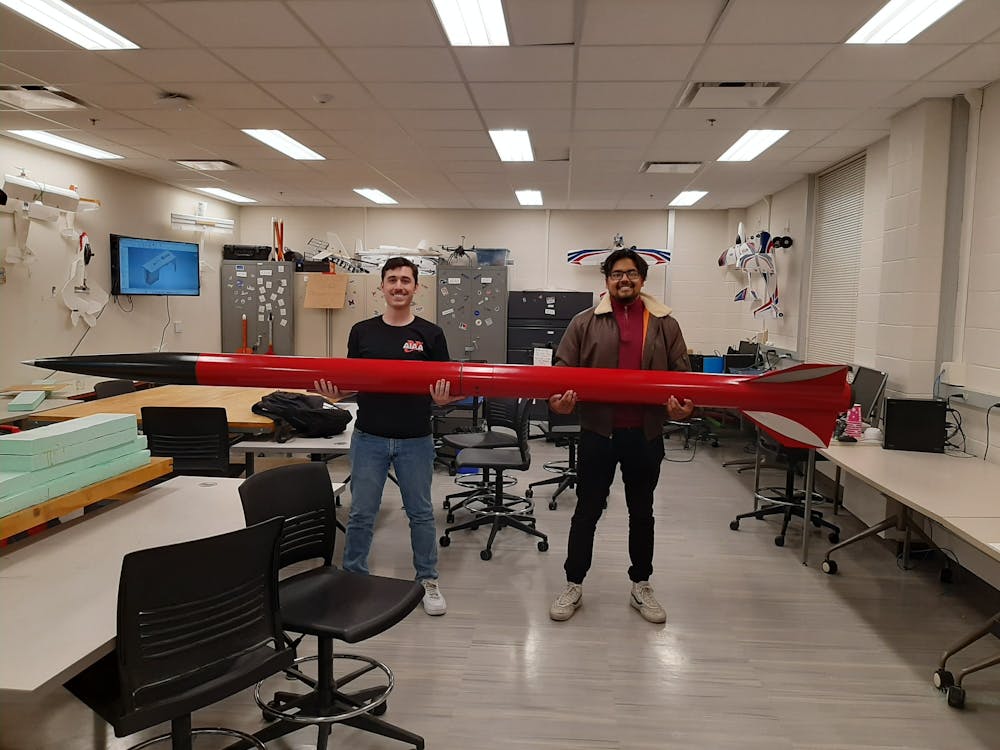Miami University’s branch of the American Institute of Aeronautics and Astronautics (AIAA) has had a meteoric ascent, making a comeback after losing its extracurricular status during the pandemic.
Much of that success has been driven by the (literally) rocket-fueled rise of AIAA’s dedicated rocket design and construction team, Miami University Rocket Propulsion Laboratory (MURPL), and its entry to the Spaceport America Cup competition.
Sawyer Martini, a senior engineering major and co-captain of MURPL, said he was highly excited for the rocket competition.
“Part of the reason why we are so motivated to do all this is that we simply really love rockets,” Martini said.
Aayush Gadal, a senior mechanical engineering major and the other co-captain of MURPL, said the impetus for AIAA to seek out a new competition began with the onset of the COVID-19 pandemic. When the pandemic started, AIAA’s activity stagnated. It lost its official status as an extracurricular, its major leaders and its access to resources during lockdown.
“We basically had nothing to do since all our leaders were gone and COVID messed up our schedule,” Gadal said.
AIAA previously competed in the “Design, Build, Fly” competition, which has guidelines that change each year. Martini said the group felt it was no longer practical to participate in that competition as there was no opportunity to build up a knowledge base for it.
The group then discovered the Spaceport America Cup. This rocketry competition involves the construction of chemically fueled rockets by students and launching them to see how high they can go.
Participating in the Spaceport America Cup would replace the “Design, Build, Fly” competition and give AIAA a major project to focus on. It also allows for a knowledge base to be built up in terms of preparation for the competition, which stays the same annually.
“The nature of the Spaceport America Cup really gave AIAA the opportunity to build up new experience in our members,” Martini said.
MURPL, under Martini and Gadal’s leadership, plans to build its rocket from commercially available parts. The rocket is set to launch at the upcoming Spaceport America Cup, beginning June 19, in New Mexico. MURPL hopes to launch their rocket 10,000 feet.
Enjoy what you're reading?
Signup for our newsletter

The rocket building team hopes it will launch 10,000 feet at their competition in June.
Much of the work on the rocket was done via planning and simulations of the necessary components, in an experiential learning process.
Martini and Gadal were motivated to lead Miami’s AIAA to participate in the Spaceport America Cup not only to bolster the club itself, but also to help members gain experience in their prospective fields.
“The Spaceport America Cup is one of the most important competitions of its kind; you have a chance to make history,” Martini said.
The Spaceport America Cup is attended by multiple large names in the aeronautics and astronautics industry, such as SpaceX, VirginGalactic, and SierraSpace.
Students of many different majors have helped MURPL. For example, political science majors have helped with fundraising, psychology majors with advertising and website design. The business behind networking with industry officials, the team’s brand, and funding is a prime opportunity for business majors.
“[The competition] is really something that integrates students from every major, and can benefit them all,” Gadal said.
Martini and Gadal hope the experiences learned from preparing for the competition will also prepare students for the “real world,” in how they can put their education to practical use. In addition, they also hope the competition increases optimism about space exploration.
“We really believe that everyone should support space exploration, because it is ultimately something that gives us hope for the future,” Martini said.




